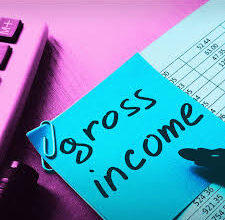The majority of Americans who make an income must contribute to the government.
Your tax liability is the amount you owe the IRS based on your filing status and income. Your tax liability is the amount of money you owe in taxes. For self-employed persons, it’s usually as simple as reviewing the tax tables for the year and computing your income tax on Form 1040.
It’s a little more challenging for people who work for themselves or own a business. In this article, we’ll show to calculate tax liability based on the sort of company entity you have.
What is Tax Liability?
Tax liability is the total amount of tax owing to federal, state, and municipal governments by individuals and corporations at a given time. Tax liabilities are short-term liabilities that are documented on a balance sheet and paid within a year for firms. Individual tax liabilities are either covered by withholdings from wages or salaries or paid out of pocket. (elcapitalino)
How Does Tax Liability Work?
According to the information you provided on your Form W-4, your employer most certainly deducted a portion of your pay for taxes during the year. They forwarded your withholding to the IRS on your behalf. Line 25a of your 2021 tax return contains the amount.
If you’re self-employed, you may have made estimated tax payments over the year, or you may have received some unexpected income from which taxes were not withheld. Form 1040-ES, Estimated Tax for Individuals, is used to make these payments. The payment should be put on line 26 of your 2021 1040 tax return, which you will file in 2022.
To calculate your tax liability, remove all of these payments from the number on line 24.
If the difference between your taxes paid and your total tax liability is negative, you can expect a refund from the IRS.
If your tax liability was $5,000 but the amount of your payments and any refundable tax credits you qualified for was $7,500, you would receive a $2,500 refund. Also, if your liability was $5,000 and you only made $4,000 in total payments, you’d still owe the IRS $1,000.
Factors Influencing Your Tax Liability
For most persons, income tax is the most significant component of their tax liability. It is decided in part by tax brackets, which are the percentages of your income that must be paid in taxes. These percentages change depending on your filing status as well as your income.
In 2023, you’d be in the 10% tax bracket, and your income tax liability would be $1,020 if you were single and earned only $10,200. If you make $95,000, you will be taxed at a tax of 24% on the percentage of your income that exceeds $89,075 every year.
Your tax liability is not determined by the amount of money you make in a given year. It is calculated by subtracting your earnings from the standard deduction for your filing status, or your itemized deductions if you choose to itemize instead. It also takes into account any other deductions or tax credits you may be qualified to claim.
The Internal Revenue Code (IRC) permits you to reduce your taxable income so that your tax liability is based on your taxable income rather than your total earnings.
Read Also: First-Time Homebuyer Tax Credit: How To Qualify
The standard deduction for single taxpayers has risen from $6,350 in 2017 to $12,950 in 2022. It, too, is inflation-indexed. Subtracting the $12,950 standard deduction from the example $10,275 single taxpayer earnings for 2023 results in a negative balance—and no tax liability.
You may also change your total income on Schedule 1, “Additional Income and Adjustments to Income.” These would be in addition to any standard or itemized deductions you may claim. They include deductions for educational expenses, student loan interest, and a percentage of the self-employment tax you’d have to pay if you worked for yourself.
Tax credits, on the other hand, reduce your tax liability in a different way. Deductions reduce your income so you pay less tax, whereas credits reduce the amount you owe the IRS immediately. If you are entitled to a $1,000 tax credit, your liability would be reduced from $5,000 to $4,000, just as if you had sent the IRS a check for that amount.
If you qualify for a refundable tax credit, it will not only reduce your tax liability. The IRS will refund any remaining balance when the credit has reduced your tax liability to zero. If your tax liability is only $500 and you are entitled to a $1,000 refundable credit, you will receive the $500 difference straight. However, the majority of credits are nonrefundable.
Types of Tax Liability
Your tax liability extends beyond any income tax you may owe. In tax, the word encompasses all types of taxes, including capital gains and self-employment taxes, as well as interest and penalties. Other things that contribute include:
If you engage in an installment plan with the IRS to pay taxes from a previous year, interest is applied to your total tax liability.
An early withdrawal from a retirement account that was subject to a 10% penalty
If you sell an asset for more than its basis, you must pay capital gains tax. The amount of your investment in the asset is your basis. Long-term gains are taxed at special capital gains rates of 0%, 15%, or 20%, depending on your income (with some rare exceptions). If you owned the asset for one year or less, it was a short-term gain. It would be applied to your tax liability as regular income and taxed in accordance with your tax bracket.
The tax brackets for single filers, head of household filers, and married filers that applied to income earned in 2021 and 2022 are listed below. They are adjusted for inflation each year.
Single Taxpayer Tax Brackets:
| Rate | 2022 | 2021 |
| 10% | $0 to $10,275 | $0 – $9,950 |
| 12% | $10,276 to $41,775 | $9,951 – $40,525 |
| 22% | $41,776 to $89,075 | $40,526 – $86,375 |
| 24% | $89,076 to $170,050 | $86,376 – $164,925 |
| 32% | $170,051 to $215,950 | $164,926 – $209,425 |
| 35% | $215,951 to $539,900 | $209,426 – $523,600 |
| 37% | $539,901 or more | $523,601 or more |
Head of household income tax brackets:
| Rate | 2022 | 2021 |
| 10% | $0 to $14,650 | $0 – $14,200 |
| 12% | $14,651 to $55,900 | $14,201 – $54,200 |
| 22% | $55,901 to $89,050 | $54,201 – $86,350 |
| 24% | $89,051 to $170,050 | $86,351 – $164,900 |
| 32% | $170,051 to $215,950 | $164,901 – $209,400 |
| 35% | $215,951 to $539,900 | $209,401 – $523,600 |
| 37% | $539,901 or more | $523,601 or more |
Tax rates for married couples filing jointly:
| Rate | 2022 | 2021 |
| 10% | $0 to $20,550 | $0 – $19,900 |
| 12% | $20,551 to $83,550 | $19,901 – $81,050 |
| 22% | $83,551 to $178,150 | $81,051 – $172,750 |
| 24% | $178,151 to $340,100 | $172,751 – $329,850 |
| 32% | $340,101 to $431,900 | $329,851 – $418,850 |
| 35% | $431,901 to $647,850 | $418,851 – $628,300 |
| 37% | $647,851 or more | $628,301 or more |
What are the typical deductions in 2021?
The standard deduction is also updated for inflation each year. Here are the projections for 2021 and 2022.
| Filing status | 2022 | 2021 |
| Single | $12,950 | $12,550 |
| Head of household | $19,400 | $18,800 |
| Married filing jointly | $25,900 | $25,100 |
How Do You Calculate Your Tax liability?
If you total up every dollar you earned in 2020 — or simply took your annual salary figure — and apply it to the tax tables above, you’ll likely receive a number that’s larger than what you’re actually obligated to pay.
Because the system is progressive, you do not pay the precise proportion for the tax bracket. If you are in the 12 percent tax band, only income in excess of $9,950 is taxed at 10% in 2021. Furthermore, certain deductions reduce the amount of your income that is taxed in the first place, whilst certain credits have a direct impact on the amount of your refund.
Determining Tax Liability
You can calculate your tax liability for the year by totaling all of your income and deducting any eligible deductions, then applying that total to the tax tables for your filing status.
Contributions to a health savings account (HSA) or an employer-sponsored retirement plan that allows pre-tax deferrals, for example, will not be included in your gross income.
Furthermore, if you paid student loan interest or are self-employed and paid health insurance premiums throughout the year, you can deduct those amounts from your gross income. These are known as income adjustments or above-the-line deductions. This yields your adjusted gross income (AGI).
From there, you can deduct either the standard deduction (in 2020, $12,400 for single filers and $24,800 for married joint filers) or itemized deductions (such as mortgage interest or state and local taxes), whichever is greater. This results in your total taxable income. The IRS uses this statistic in conjunction with the tax brackets to calculate your tax liability.
How to Reduce Your Tax Liability
Good day, deductions and credits! One strategy to decrease your tax liability is to take advantage of any available deductions and tax credits. These newborns cut your taxable income and can put you in a lower tax category, which means less of your income is taxed.
When it comes to these deductions, you have two options: take the standard deduction ($12,550 for single filers and $25,100 for married couples for the 2021 tax year) or itemize.
This covers, for example, certain medical bills, mortgage interest, and property taxes.
Remember that if your itemized deductions are smaller than the standard deduction, you should take the standard deduction so that less of your income is taxed. After Congress nearly increased the standard deduction in 2017, most taxpayers save money by claiming the standard deduction rather than itemizing.
Tax credits are another technique to reduce your overall tax liability. Credits differ from deductions in that they reduce the dollar amount of your overall tax bill after the tax percentages are applied. These include tax benefits for children or dependents, as well as the adoption credit.
Read Also: How Does a Pension Work?| Detailed Explanation
Contributing to a 401(k) or other pre-tax retirement savings account can help reduce your tax liability. Your taxable income is reduced as a result. However, keep in mind that this is not the best long-term option for everyone. This is due to the fact that when you reach retirement age, you will have to pay taxes on your funds.
But keep in mind that if you haven’t already paid off all of your debt and saved up a fully-funded emergency fund, this isn’t an excuse to skip this stage. Saving a few dollars on taxes isn’t worth remaining tethered to all those monthly debt payments. Never invest only for the purpose of receiving a tax break. Also, consult with a SmartVestor Pro to determine which choice is best for you.
Is Tax Liability Equal to the Tax Due?
When you start a new job, you must complete Form W-4. This tells your employer how much income tax to take from your paychecks based on your filing status, family situation, and any additional employment you have.
The amount withheld for income taxes from each paycheck is sent to the IRS on your behalf by your employer. You’ll receive a W-2—or 1099 if you’re an independent contractor—from each employer at the start of each calendar year, documenting how much you made and how much was deducted for taxes. Self-employed individuals typically pay their taxes quarterly rather than through withholdings.
If your financial status changes during the year, you must update and resubmit your W-4 to your employer to ensure that the correct amount of money is withheld to pay your tax liability. Self-employed individuals can use tax planning to determine their tax liability.
If you qualify for tax credits, you can use them to reduce your tax burden on a dollar-for-dollar basis. Some credits are even refundable, which means that if the entire value of the credits exceeds your tax bill, you can get the difference back as a tax refund.
How Can One Avoid Paying Taxes?
Reducing the portion of your gross income that is taxed is the key to lowering your tax obligation. Increase your retirement contributions, if possible.
Is There a Tax Obligation for Everyone?
If your income is sufficiently low, you won’t owe any taxes at all. You won’t owe the IRS anything because your standard deduction will be greater than your taxable income. This is a predicament that millions of Americans face. They do not file tax returns, and many do not pay federal income taxes.
Which Income Is Exempt from Taxes?
Income from any source that the federal, state or local government excludes from the calculation of its income tax is considered tax-exempt income. Although individuals and corporations may be required to record this income on their tax returns, it won’t be taken into account for calculating their tax obligations.
If I Didn’t Earn Any Money, Do I Still Have to Pay Taxes?
Under certain conditions, those who earn less than the minimum threshold may still be required to file a tax return. For instance, if you made $400 through self-employment, you’ll need to file a tax return and pay self-employment tax. However, you are not required to file if you are unemployed.
Can I Get Someone Else to Cover My Tax Debt?
Yes. The person’s Social Security number is entered while making the payment on their behalf.
What Will Happen if You Owe Taxes but Cannot Pay Them?
If you discover that you are unable to make the full payment by the filing deadline, you should still submit your return and make the minimum payment possible by the deadline. Attach a Form 9465, “Installment Agreement Request,” to the front of your tax return to see if you are eligible for an installment payment plan.
Conclusion
Whether you’re a business owner or an individual, knowing your tax liability ahead of time will help you avoid surprises come tax season. Nonetheless, the unpredictability of taxes is one reason it’s critical to preserve an emergency fund. If your tax liability varies from year to year, you’ll have enough money to handle the difference.
Tax Liability FAQs
How do I know what my tax liability will be?
This information can be found on your most recent earnings statement or payroll stub. Subtraction of withheld taxes from estimated tax bill This is the amount of withholding you’ll need to meet your expected tax liability for the rest of the year. Divide the amount you still owe by the number of pay periods remaining.
How do I reduce my tax liability?
The key to lowering your tax liability is to reduce the percentage of your gross income that is subject to taxation. Consider raising your retirement savings. Investing pre-tax cash in an employer-sponsored retirement plan, such as a 401(k), is a simple way to lower your taxable income for the year.






